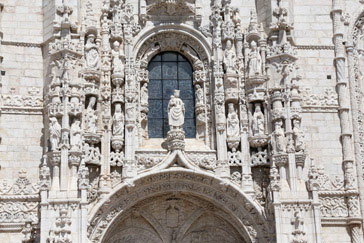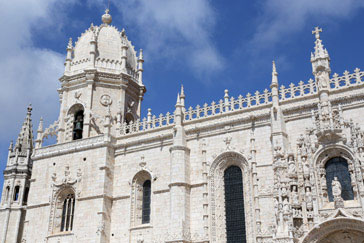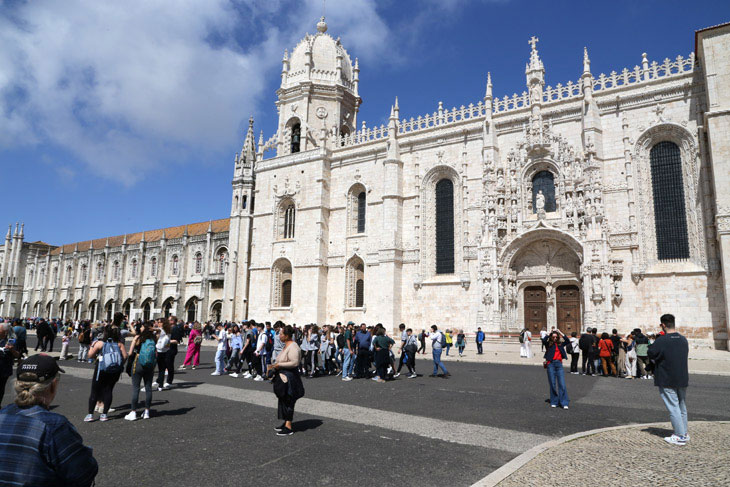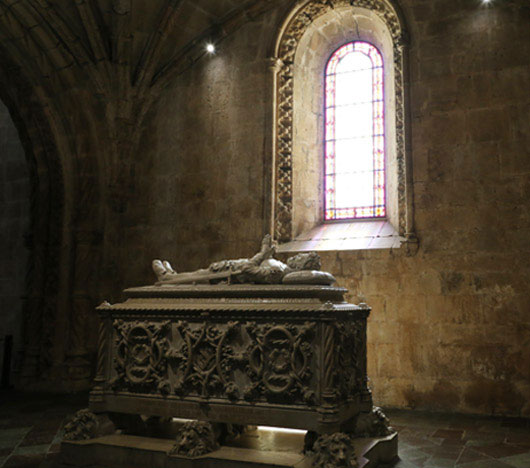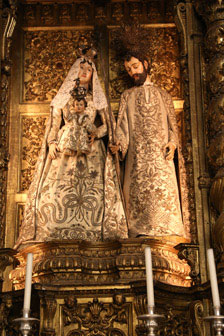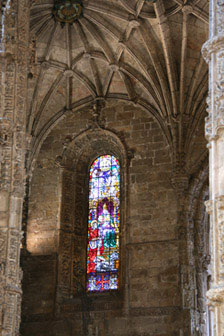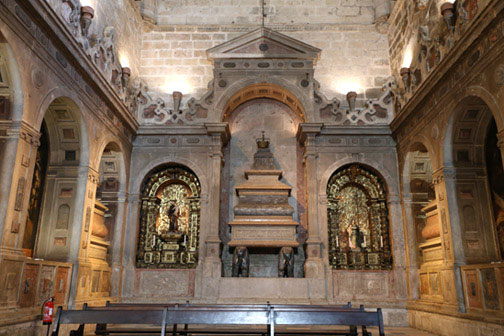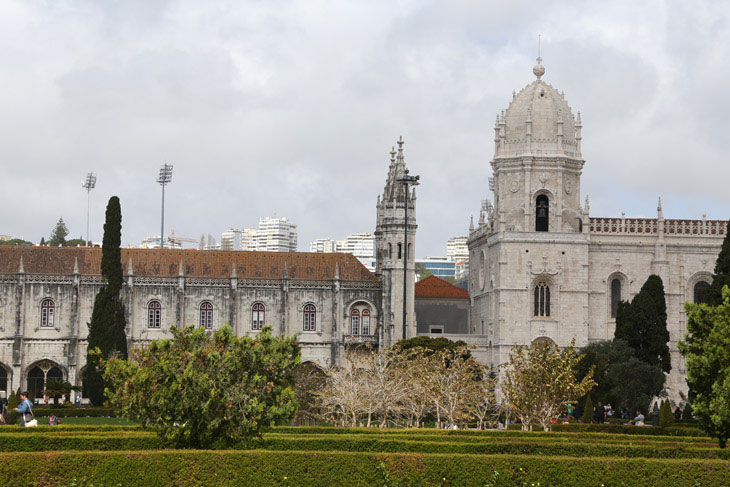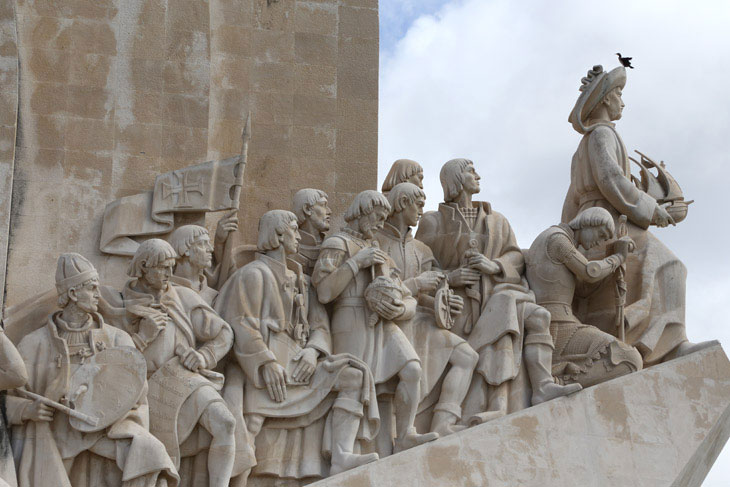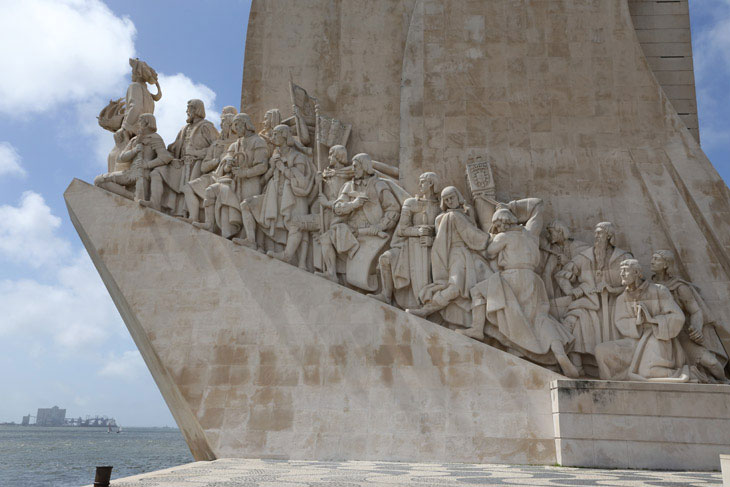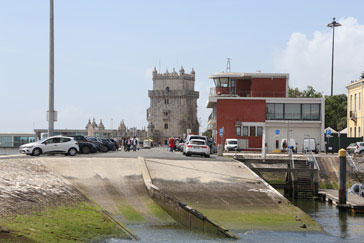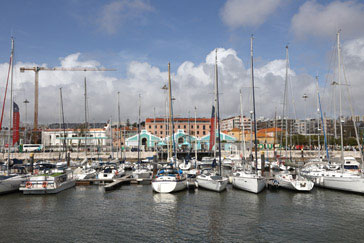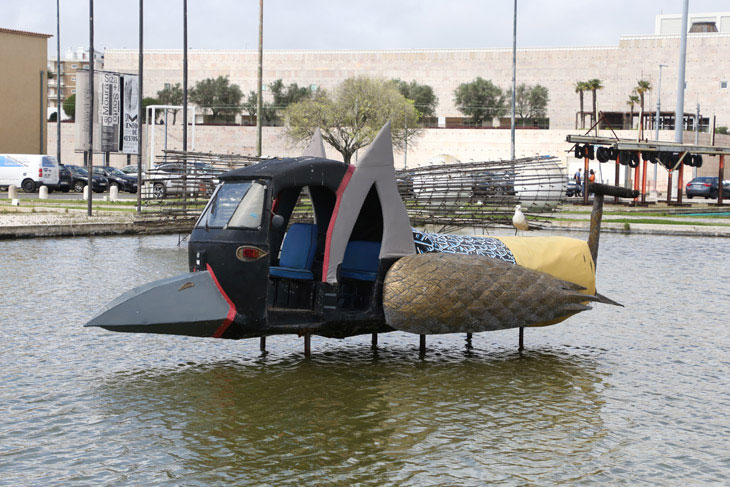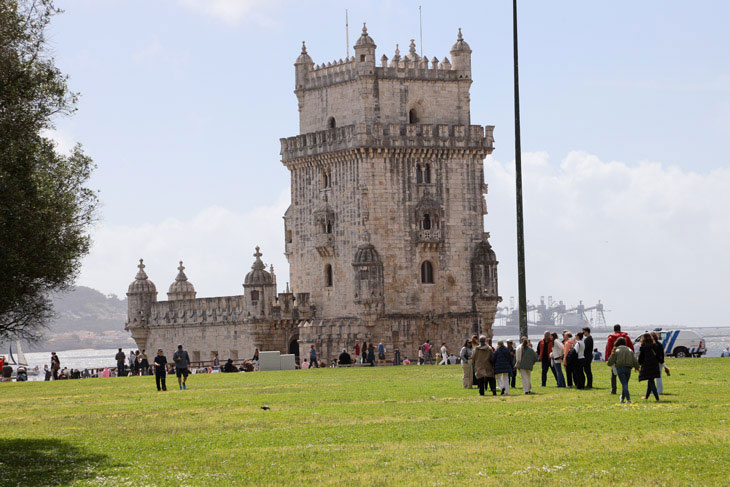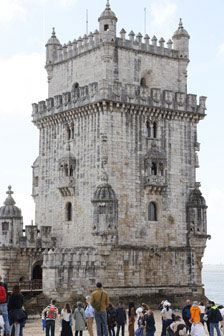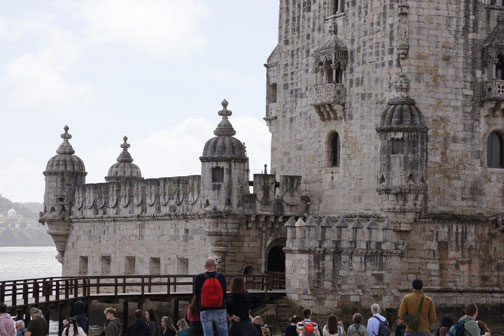Childhood Dreams
Belém
If you fly into Lisbon, the first thing you may notice when the city comes into view on your approach
to the airport is the massive Monument of the Discoveries located in the section of western Lisbon called
Belém. In the 16th century, this area was full of shipyards and docks and it is from here that the
Portuguese explorers embarked on their journeys.
To get there, we set out on tram 15 which originates around the Praça da Figueira. It was a pleasant
journey until we reached the Praça do Comercio and a gazillion tourists crowded on. People without
transit cards were having trouble depositing their fares either because they didn't know how to use the
fare machines or the machines were not working properly. Finally everyone had piled inside and we moved
slowly on.
Suddenly the tram stopped and everyone was herded off and onto a different tram. Did the tram break down?
We never did figure it out. Unfortunately, in the confusion we ended up at the end of the line and consequently
spent the rest of the journey jammed against the back doors.
One of the recommended tourist activities in Lisbon is to take tram 28 through the hills of the city. We had
already decided that would not be something we would enjoy, but our experience on over-crowded tram 15
certainly reinforced that decision.
Finally, we emerged at the impressive Jerónimos Monastery.
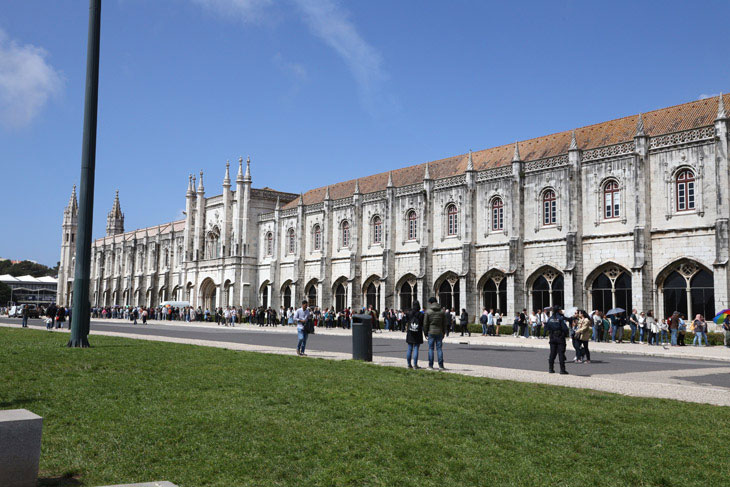
We had been looking forward to visiting the monastery and had purchased entry tickets in advance on-line, but
the entry line stretched far into the distance and the sun was getting hot. We estimated that we would have
to stand in line at least an hour to get in.
As we stood admiring the building's facade and deciding what to do, we were constantly approached by women in
black who tried to sell us braclets and scarves and coin purses and men insisting that we needed to buy sunglasses
from them.
Finally we decided to abandon our plans to visit the monastery and, instead, joined the line to enter the
Church of Santa Maria de Belém. Entry to the church is free, and the line is much shorter and moves much
faster.
Inside, the church was cool, quiet, and very peaceful.
The explorer Vasco de Gama and the poet Luis Vaz de Camoes who wrote about his adventures are entombed here.
This is the tomb of de Camoes.
One final picture of the monastery and the church.
Our next destination was the Monument to the Discoveries, but to get there we had to cross a busy street.
There didn't seem to be any crosswalks or traffic lights, but after several minutes of confusion, we found
a pedestrian tunnel that went under the street. As we approached the monument, a man was playing a guitar,
and everyone seemed to be in a light-hearted mood.
A temporary version of the monument was created for the Portuguese World Exhibition in 1940. The permanent
sculpture that exists today was created in 1960 to mark 500 years since the death of Prince Henry the
Navigator.
Thirty two people from the 15th and 16th centuries are represented in the sculpture. Although most of those
represented were explorers, there is a painter, a cartographer, a diplomat, several writers, some missionaries,
and a mathematician, not to mention to Prince Henry's mother.
We could see our final destination for the day, the Belém Tower in the distance, but it was a longer
walk than expected because there is a marina with a waterway so the boats inside can get to the river. You
have to walk around the marina to finally reach the tower.
We passed this on the way. I have no idea what it is. Art?
The tower itself is at the river's edge in a lovely, quiet park. It was built in the early 16th Century
to protect Lisbon from pirates and hostile invaders. At that time, it was actually on a small island, but
due to the Great Earthquake of 1755, the island shifted closer to the land.
The thought of taking the crowded tram back to the hotel was not appealing, so we called an Uber. The pastries
and port in the hotel lounge tasted especially good that day.

